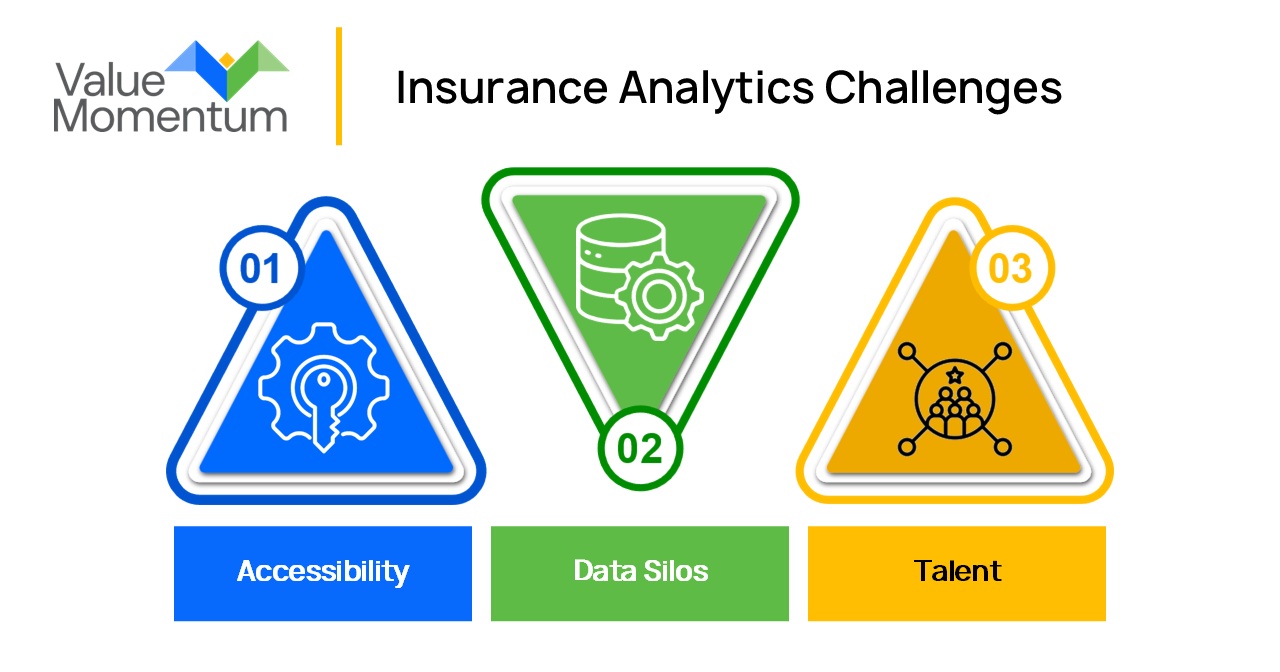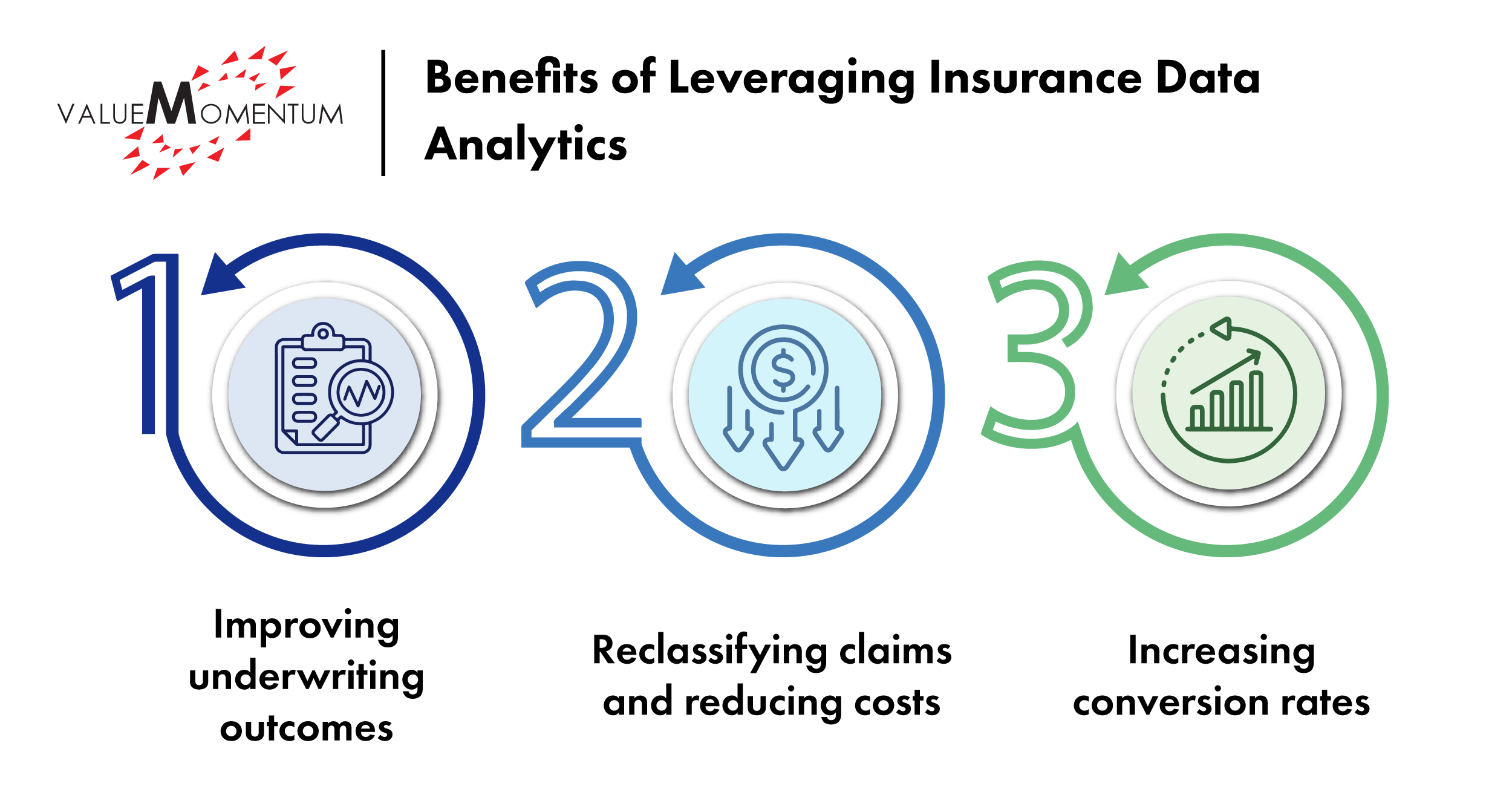Insurers have known that data can improve their decision-making for years, but as data analytics capabilities have improved and more use cases have emerged, insurance analytics has become a more significant area of investment. Around 19% of a typical property and casualty (P&C) insurer’s budget is going toward data efforts. In fact, the average percentage of insurer IT budgets being dedicated to data is now greater than that being allocated to digital or security, falling second only to core systems investments.
Insurance analytics can help carriers across the value chain, from optimizing how they run their business to maximizing their opportunities for growth to accelerating transformation initiatives. But gaining the maximum value from insurance analytics depends on an insurer’s ability to leverage the latest data tools, the quality of its data, and the organization’s understanding of data best practices.
This blog post dives into challenges insurers commonly face when it comes to insurance analytics as well as examples of how insurance analytics can drive value across different parts of the insurance value chain.
Challenges With Insurance Analytics
Yielding actionable results from increased investments in analytics requires insurers to address some of the challenges that come along with managing data initiatives. Three of the top challenges keeping insurers from getting the most out of their data analytics capabilities are:

Accessibility: The numerous applications, platforms, and systems insurers use all have their own data, and integrating these data sources with each other — as well as with third-party partners and data sources like Internet of Things (IoT) devices — is critical.
Data Silos: On top of this sheer quantity of data, nearly every insurer is dealing with legacy systems of some kind. These offer a unique challenge when it comes to data, as they are often difficult to integrate with newer platforms and create data silos. This makes it tricky to pull data out of legacy systems and analyze across different business units. Carriers need to have processes in place to ensure data is accessible across systems, clean, compatible, and ready to be analyzed.
Talent: In addition, as data capabilities evolve, so do the skills needed to maximize the value of insurance analytics. Finding the right mix of data workers is not easy in a competitive talent landscape, and insurers are evolving their hiring practices to find the skills they need. Employees on all teams should be educated on the importance of data and upskilled to promote data literacy from the top down.
Insurance Analytics to Run, Grow, and Transform Your Business
With the right metrics aligned to the right business outcomes, analytics can help insurers improve their processes, hone their products, and set their organizations up for future innovation efforts.
Analytics models can help carriers predict the likelihood of customer churn, for example, or identify outliers at first notice of loss. With sales and distribution, analytics can help agents refine their performance and provide sales teams with a full picture of the customer journey.
Here are three examples of how real carriers are leveraging data analytics to optimize their processes, maximize their opportunities for growth, and accelerate their ability to transform their organization.

1. Improving underwriting outcomes
One insurer found that leveraging new sources of data helped it improve its underwriting workflow for homeowners policies. The carrier incorporated aerial imagery into its assessments of properties to verify the condition of shingles on roofs and see if there is any existing or substantial risk of damage.
Leveraging this new form of data enabled the insurer to more accurately evaluate specific properties, leading to better pricing outcomes for its policies and an improved overall risk portfolio. Reunderwriting some 12,000 roofs has saved the carrier an estimated $22 million.
Enhancing the information used in the underwriting process has also helped the carrier create a new way to reduce claims costs. Aerial imagery has unlocked a new way for the carrier to identify a more holistic risk portfolio for properties, catching damage that the previous underwriting process likely would not have.
2. Reclassifying claims and reducing costs
A Midwest-based property and casualty insurer adopted natural language processing (NLP) as part of its claims process to review catastrophe claims and reclassify any that were misclassified. The technology has helped the insurer ensure its claims categorization is more accurate and that incorrectly categorized claims are identified on a more timely basis, which has multiple benefits.
Not only has the insurer recovered an average 2.5% of losses from reinsurance due to misclassified claims, but its internal reporting and analysis is better due to cleaner source data. The carrier has also been able to negotiate better reinsurance terms by retagging previously misclassified catastrophe claims for accurate risk assessment.
Rebuilding claims processes with the latest technologies and data sources available can help insurers across all lines of business, not just catastrophe lines, recover losses and ensure that their claims life cycle is as seamless as possible.
3. Increasing conversion rates
A large property and casualty insurer was seeking to increase its quote conversion rate for its field agents as well as to speed up the turnaround time from quote to policy conversion. To do this, the carrier created a predictive model powered by machine learning to assess how likely its quotes were to convert into an actual insurance policy.
By putting this model into practice, the insurer has changed the way its agents prioritize their interactions. Agents now know the leads that are most likely to turn into policyholders, which means the agents’ time is being spent more effectively and efficiently.
Since launching this machine learning model, the insurer has seen a 1.2% jump in its conversion rate, which in turn has led to higher overall revenue. The carrier has also seen an increase in priority leads for agents to work on as well as better agent performance and satisfaction rates.
Getting the Most Out of Data Analytics
As data investments increase and insurers move farther down the road of data modernization, the benefits they are able to gain from leveraging insurance analytics are growing, too. There are ways to apply insurance analytics across the entire value chain, and more use cases are emerging as technology evolves.
Maximizing the value an insurer gets out of insurance analytics can help improve the way business is conducted, uncover opportunities for the organization to grow, and transform ways of doing business to achieve success across functions.
To learn more about how to derive the most benefit from insurance analytics, read our whitepaper “Driving Business Value With Insurance Analytics.”
